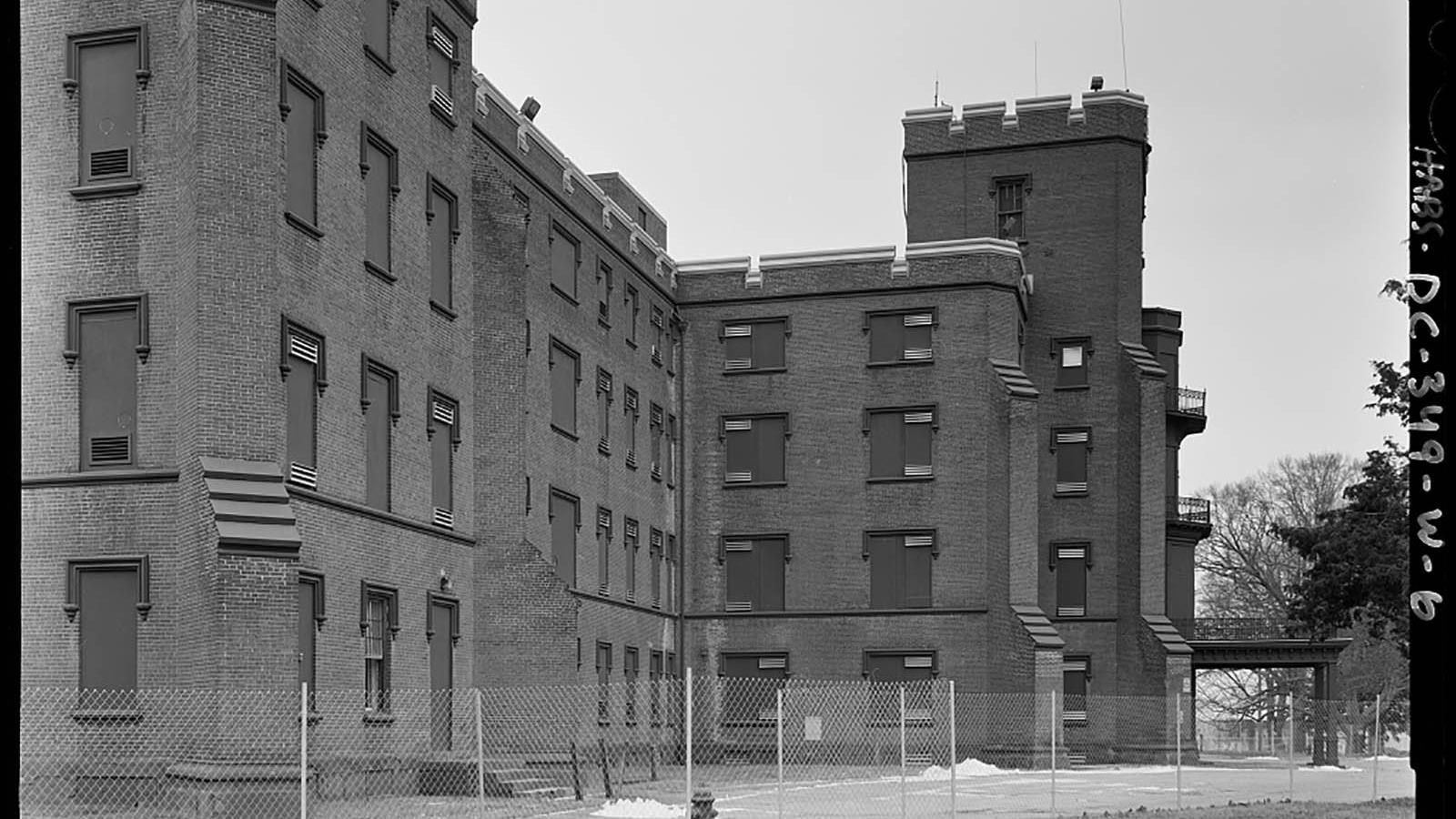Last updated: February 14, 2025
Place
St. Elizabeths Hospital

NPS
St. Elizabeths Hospital, formerly known as the Government Hospital for the Insane, was the first federally-funded mental hospital in the country. Dorothea Dix, a prominent 19th-century social reformer and advocate for mental health, lobbied for a public facility to care for mentally ill military personnel and local Washington, DC, residents. In 1852, Congress established the Government Hospital for the Insane on 350-acres overlooking the Anacostia River in Southeast Washington. It would become an international model for psychiatric hospital design and a prominent center for mental health research during the late 19th and early 20th centuries.
New developments in psychiatric care influenced the architecture of St. Elizabeths. Dr. Charles H. Nichols, the first superintendent of St. Elizabeths, and Dorothea Dix subscribed to the philosophies of Dr. Thomas Kirkbride, who advocated for the humane treatment of psychiatric patients. Unlike older mental asylums, at St. Elizabeths, each patient was to have their own private room, which all had views of nature. St. Elizabeths was the first mental hospital to follow Kirkbride’s design precepts. Many new institutions across the country would follow.
Then Architect of the Capitol, Thomas U. Walter, designed the Center Building, which held both administrative offices and patient rooms. He also planned the East and West Lodges to house African-American patients. Progressive for its time, the institution would serve all races. Yet, because of overcrowding and limited resources, African Americans did not always receive the same level of care as their white counterparts.
One unique aspect of the Government Hospital for the Insane was its partial self-sustainability. Two springs on the grounds furnished drinking water. Farmland surrounding the buildings provided fresh produce and occupational therapy for patients. Staff encouraged patients to work on the farms and in the greenhouses. The farm operated until 1965. Patients also helped construct and repair hospital buildings. Staff members lived on campus. Across the river from the Capitol, a small hospital village evolved.
By the Civil War, the hospital was almost at capacity. Tents dotted the grounds for overflow needs. Many of the single rooms housed two or three patients at a time. The Union army and navy re-purposed several buildings to care for their wounded. Three separate health institutions occupied the campus. The army hospital and mental hospital shared the Center Building and the navy hospital occupied the unfinished West Lodge. The army hospital was named after the original tract of land called St. Elizabeth. After the war, the psychiatric hospital adopted the name.
Several construction projects changed the landscape of the campus. In the 1877, William W. Godding replaced Nichols as superintendent. He agreed with some in the psychiatric community who deemed the Kirkbride architecture too “prison-like.” Godding favored detached cottages for their affordability and the freedom they afforded patients. Following trends in mental health treatment, a series of cottages emerged on the campus in the 1870’s. In 1910, the impressive Hitchcock Hall opened as an auditorium. The hall hosted vaudeville performances, moving pictures, operettas, musicals, dances, and lectures. In the 1930's, the construction of several new large buildings expanded the campus.
The hospital also became a premier research institution in the early 20th century. At that time, St. Elizabeths hired Dr. Isaac W. Blackburn, one of the first full-time pathologists to work in a public mental hospital. A skilled artist, Blackburn achieved distinction for his anatomical drawings of the brain. St. Elizabeths pioneered many new therapies, including psychotherapy, hydrotherapy, and malarial therapy. In 1908, the institution became one of the first American hospitals to practice psychoanalysis.
In contrast to the pioneering work conducted at St. Elizabeths, other treatment techniques conducted at the hospital further solidified limited beliefs towards the LGBTQ community. From its opening in 1855 until the mid-20th century, gay and lesbian tendencies at St. Elizabeths were considered and treated as a sickness. This theory subjected gay and lesbian individuals to medical treatments including electroshock therapy, lobotomies, and insulin induced comas as well as psychoanalysis and aversion therapy through 1960. While considered by many to be cutting edge treatments at the time, these inhumane practices strengthened bigoted belief systems in the medical community.
Patient numbers swelled during World War II. By 1955, St. Elizabeths treated around 7,500 patients each day. In 1964, the hospital built a children’s center to cater to young patients. Yet, the institution struggled with funding beginning in the 1970's. After significant downsizing, all services on the West Campus, the grounds west of Martin Luther King Boulevard, stopped in 2003. Since 2010, the District of Columbia has operated a mental health facility on the East Campus. The General Services Administration (GSA) is currently redeveloping the 176-acre West Campus to become the headquarters of the Department of Homeland Security. Still federally-owned, the Central Building and other significant historic structures serve as monuments to pioneers of psychiatric medicine.
A project through the Underrepresented Community Grant Program, which works to expand nominations submitted to the National Register of Historic Places, funded the effort to recognize the significance of this property related to gay and lesbian history in DC.
Source:
Otto, Thomas. St. Elizabeths Hospital: A History. United States General Services Administration, 2013.
National Historic Landmark Nomination of St. Elizabeths Hospital.
National Historic Landmarks (NHLs) are historic places that possess exceptional value in commemorating or illustrating the history of the United States. The National Park Service’s National Historic Landmarks Program oversees the designation of such sites. There are just over 2,500 National Historic Landmarks. All NHLs are also listed in the National Register of Historic Places.
